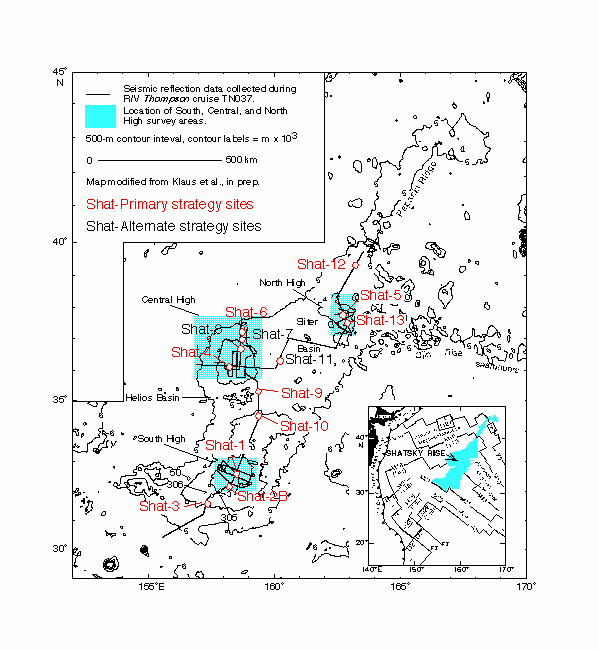
Leg 198Shatsky RiseThe mid-Cretaceous (Barremian-Turonian) and early Paleogene were characterized by some of the most equable climates of the Phanerozoic, and are among the best known ancient "greenhouse" climate intervals. In addition, these intervals contain some of the most abrupt and transient climatic changes in the geologic record, including the latest Paleocene thermal maximum, the mid-Maastrichtian deep-water event, and the early Aptian Oceanic Anoxic Event. These transitions involved dramatic changes in oceanic circulation, geochemical cycling, and marine biotas. The proposed drilling plan is designed to address the long-term climatic transition into and out of "greenhouse" climate as well as the abrupt climatic events. The depth transect has been designed to characterize changes in the nature of surface and deep waters through time, including vertical gradients of temperature, oxygenation, and corrosiveness. Combined with the results of previous and future legs, the proposed drilling will help determine: (1) the frequency, amplitude, and forcing of climate change in warm intervals, (2) latitudinal thermal gradients in discreet mid-Cretaceous to Paleogene time slices, and (3) changes in the sources of deep water and vertical ocean structure through time. Shatsky Rise has been the target of three Deep Sea Drilling Project legs, but most sites were spot-cored or plagued by low recovery, especially in the Cretaceous. Previous drilling was centered on the southern part of Shatsky Rise. Leg 198 includes sites on the central and northern parts of the rise where the stratigraphy is less well known. Chert provides a significant recovery problem in the Cretaceous, thus we have attempted to position sites at locations with poorly developed reflectors. In addition, the drilling strategy includes multiple XCB coring and PDC-bit rotary coring, which will increase recovery in cherty intervals. In intervals of poor core recovery, FMS and gamma-ray logs will help determine the stratigraphic extent of diagnostic sediments such as black shale.

Staff Scientist: Mitch Malone Operations Schedule | Back to FY 01-02 Abstracts
|